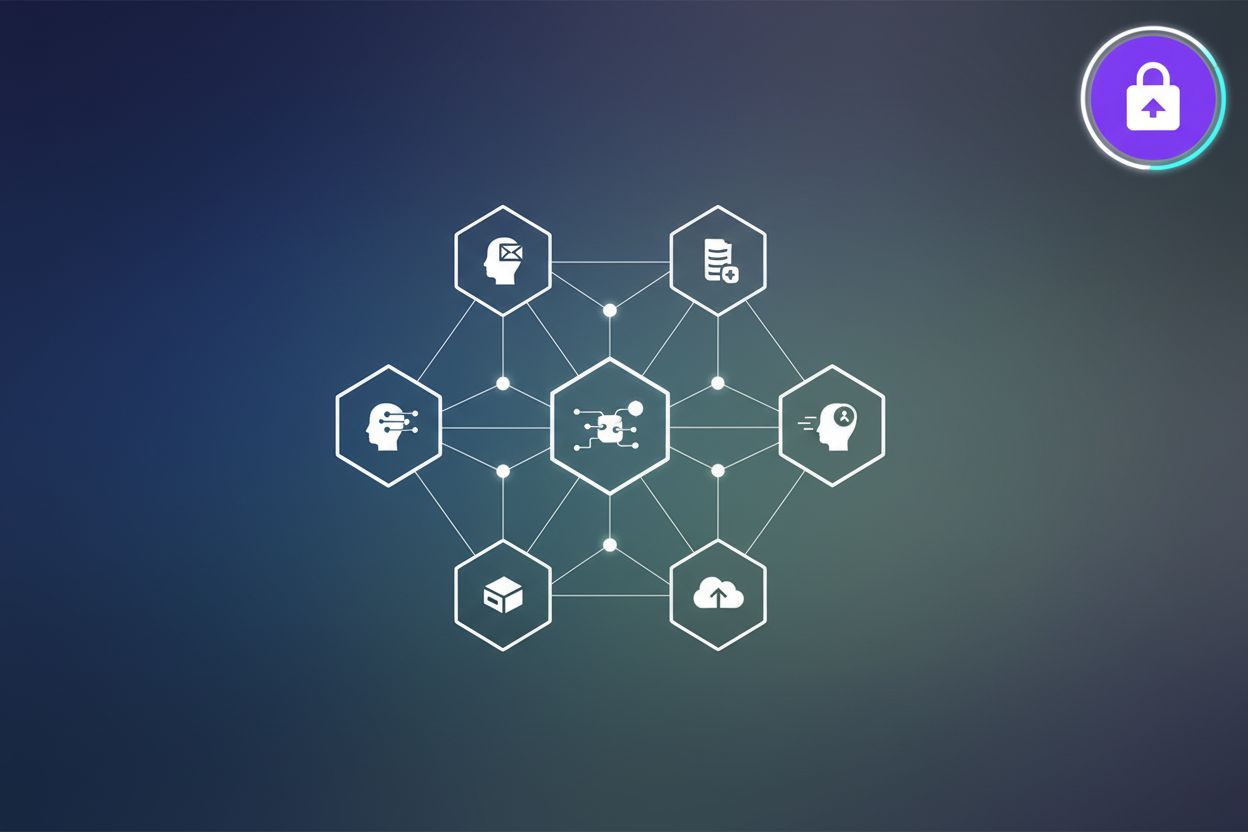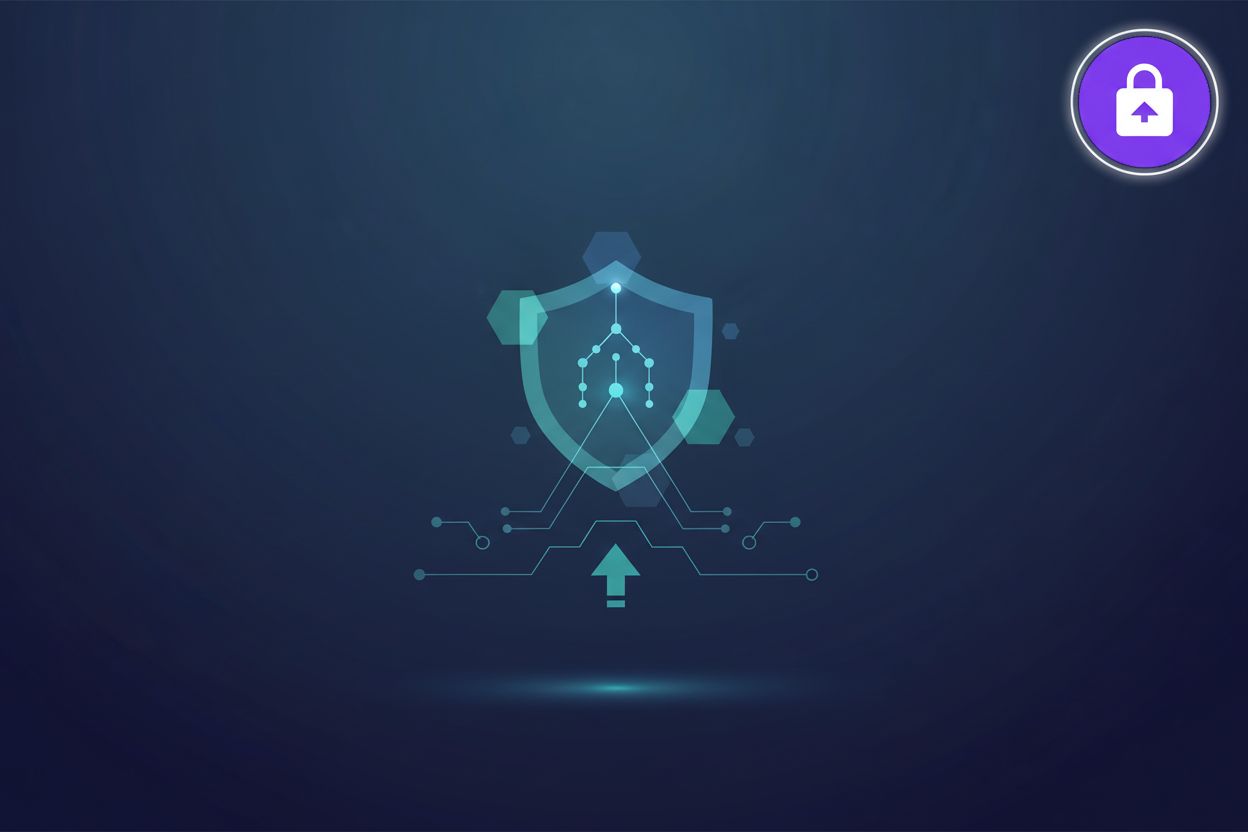Exploring Lightweight Directory Access Protocol (LDAP)
TL;DR
What is LDAP? A Developer's Intro
So, ever wondered how your computer knows it's really you logging in? There's a good chance LDAP is part of the answer. It's kinda like the internet's phonebook, but way more secure and structured.
LDAP, short for Lightweight Directory Access Protocol, it's like a specialized database protocol. Think of it as a streamlined way to access and manage directory information, especially over an IP network, as Wikipedia explains.
- Basically, it's a way to organize info about users, groups, devices—anything on a network.
- It is vendor-neutral and industry standard application protocol for accessing and maintaining distributed directory information services over an Internet Protocol (IP) network[1].
As a developer, you might be asking, "Why should I care?" Well, LDAP offers some pretty sweet advantages:
- Centralized authentication: One place to manage all your users and their passwords.
- Efficient lookups: Quick access to user info. No need to write complicated queries.
- Standard protocol: Works across different systems and platforms.
As NetSuite points out, LDAP is critical for information security and identity management.
Ready to dive deeper into how LDAP actually works? Next up, we'll explore the nitty-gritty details of LDAP architecture and its role in authentication.
LDAP Architecture: Understanding the Directory Structure
Okay, so you're picturing LDAP's directory structure, right? Think of it like organizing your files, but on a much grander scale. It's not just slapping files into folders; it's about creating a whole organizational system that makes sense for, well, everything.
The core of LDAP's architecture is the Directory Information Tree (dit). It's a hierarchical structure, kinda like a family tree, but for data.
- This tree organizes entries in a hierarchical structure. Each entry is like an object, like a user, group, or device, with its own set of attributes. (Data Structures Deep Dive (4/8): Trees: Hierarchical ...)
- Each entry has a Distinguished Name (dn), this is like the entry's unique address. It tells you exactly where that entry sits within the dit. Think of it like a full file path on your computer.
- The dit typically follows a logical structure, for example, starting with countries, then organizations, then organizational units, and finally, individuals. So, it's like a global org chart for everything on the network.
Entries are where the actual information is stored—usernames, emails, all that jazz. Each entry have attributes, which are characteristics of the objects, like username, email, or department. Imagine them as key-value pairs, where the key is the attribute and the value, well, is the value.
Here’s a simple example of a user entry:
DN: cn=John Doe,ou=People,dc=example,dc=com
Attributes:
cn: John Doeuid: jdoemail: [email protected]objectClass: person, organizationalPerson, inetOrgPerson
Schemas are like the rules of the game. They define what kind of objects and attributes you're allowed to use in the directory. Think of it as a blueprint that dictates how everything is structured and what kind of data it can hold.
Schemas are super important because it ensures that the directory remains consistent and organized. Without it, it'd be total chaos.
All this might sound like a lot, but once you get the hang of it, LDAP's directory structure is actually pretty straightforward. Next, we'll dive into how this structure is used in real-world scenarios.
LDAP Operations: How you interact with the Directory
Okay, so you've got this LDAP directory all set up—now what? It's not just a pretty tree of data, you actually gotta do stuff with it. Think of it like having a fancy filing cabinet, but you need to know how to open the drawers, add new files, and find what you're looking for.
LDAP operations are how you interact with the directory. There's a bunch of em, but some are used more than others, right? Here's a few common ones:
- Bind: This is how you authenticate to the LDAP server. Think of it like logging in. You gotta prove who you are before you can start messing with things.
- Search: Querying the directory for entries. This is where you go looking for specific users, groups, or devices.
- Add: Creating new entries. Like adding a new employee to the directory, or a new printer on the network.
- Modify: Updating existing entries. Change a user's password, update their department, that kinda thing.
- Delete: Removing entries. When someone leaves the company, you gotta clean em up the directory.
- Compare: This operation lets you test if a named entry contains a specific attribute value.
LDAP can do more than just the basics, you know? It got some "extended" operations for more complex stuff.
- StartTLS: Securing the connection with TLS. Because sending passwords in plain text is a big no-no.
- Unbind: Closing the connection. Like logging out. Important for security and resource management.
- Extended: Used for custom operations. This is where you can get creative and define your own operations that weren't part of the original protocol specification, according to Wikipedia. For example, you might create an extended operation to trigger a specific workflow or to retrieve specialized data not covered by standard attributes.
So, now that you know the basic operations, you can start to see how valuable LDAP is, right? Next, we'll look at some code examples to make the theory a little more practical.
LDAP Authentication and Authorization
Okay, so you've got users, now you gotta make sure they are who they say they are, right? That's where LDAP authentication comes in. It's like the bouncer at the club, checking IDs before letting anyone in.
The bind operation is the core of LDAP authentication, according to Wikipedia. Think of it as the handshake between the client and the server. The client, that could be you logging into your email or an app trying to access a database, sends a request to the server with its credentials.
- It authenticates a client to the server.
- It uses a username and password, or other credentials like certificates.
- The server checks these credentials against the directory and, if they match, grants access. It's like presenting your id and getting the nod to enter.
There's a few ways this authentication dance can go down. The simplest is, well, simple authentication: username and password. Easy to implement, but not exactly Fort Knox.
- Simple authentication sends your username and password in plain text...yikes! Never do that without TLS encryption!
For something more secure, there's sasl (Simple Authentication and Security Layer). It supports a bunch of stronger authentication mechanisms. SASL is great because it abstracts away the complexities of different security protocols, allowing applications to use a consistent interface for authentication.
- sasl it offers authentication services through a wide range of mechanisms, e.g. Kerberos "Kerberos (protocol)") or the client certificate sent with TLS, as Wikipedia explains.
- Think of it as using a fancier, more secure ID card that's harder to fake. It's more secure than simple authentication because it often involves challenges and responses, making it harder for attackers to intercept and reuse credentials.
Okay, so you're in, but what can you do? That's authorization. LDAP determines what resources a user can access based on their identity.
- It uses group memberships and attributes.
- Think of it as Role-Based Access Control (rbac).
As NetSuite explains, after an LDAP-enabled client authenticates, LDAP authorization is the process of granting that client access to the resources it has permission for.
Now that you're authenticated and authorized, what about securing communication? Next, we'll dive into securing LDAP connections with TLS and other methods.
Security Considerations: Protecting Your LDAP Directory
Okay, so you're using LDAP – great! But are you really sure it's locked down tight? Security isn't just a "nice to have" it's, well, everything.
Think of LDAP injection like a sneaky back door. If you don't scrub user inputs properly, attackers could slip in malicious code – kinda like what Wikipedia mentioned about SQL injection.
- Prevent it by sanitizing those user inputs. Treat every input like it's potentially hostile, cause it might be!
- Man-in-the-middle attacks are another worry. Someone could be listening in on your LDAP traffic.
So, how do we defend against these threats? Simple, really:
- Always, always use tls/ssl for encryption. Sending data in the clear is like shouting your passwords from the rooftops.
- Implement multi-factor authentication (mfa). Even if someone snags a password, they'll need that second factor to get in. It's like having a deadbolt on your digital front door.
- Regularly audit your ldap configuration. Make sure your settings are still secure and that no one's made unauthorized changes. It's like checking the locks on your doors and windows.
ldapsearchcan be super useful here for checking permissions and user attributes. - Keep your ldap server software up to date. Updates often include security patches that fix known vulnerabilities.
A few tools can help you lock things down:
- ldapsearch: for querying the directory. You can use it to audit permissions, check user attributes, and ensure only authorized users have access to sensitive information.
- wireshark: for analyzing network traffic. This helps you spot unencrypted LDAP traffic or any suspicious communication patterns.
- nmap: for scanning for vulnerabilities. You can use it to identify open ports on your LDAP server and check for common misconfigurations or outdated software versions that could be exploited.
Securing your LDAP directory might seem like a chore, but it’s worth the effort, trust me. Now, what about even more ways to keep your directory safe? That's what we'll dig into next.
LDAP vs. Active Directory vs. SAML: Choosing the Right Tool
Ever wonder how different authentication methods stack up? Let's dive into LDAP, Active Directory, and SAML – it's like comparing apples, oranges, and, well, maybe a pineapple in the world of user access.
Okay, so here's the deal: LDAP is a protocol, think of it as a set of rules for how to talk to a directory. Active Directory (AD) is Microsoft's directory service that uses those rules (and a whole lot more) to manage network resources.
- LDAP is the language; AD is the entire library system that speaks that language.
- Active Directory uses ldap as one of its core communication methods to manage users, computers, and other network stuff.
- You can use LDAP with many different directory services, not just AD. AD is a specific implementation that leverages LDAP.
Now, about SAML; it's for single sign-on (sso). It's like having one key to unlock multiple doors on the web. It's a completely different beast from LDAP. While LDAP is about accessing directory information, SAML is about exchanging authentication and authorization data between an identity provider (like your company's login system) and a service provider (like a cloud app).
- LDAP handles directory access and authentication within a network or application. SAML handles authentication between different, often external, services.
- SAML is designed for web-based authentication, allowing users to log in once and access multiple applications without re-entering credentials.
- Think of SAML as a streamlined way to log in across different websites and services, while LDAP is more about how those services manage user information internally.
So, to recap: LDAP is a protocol for directory access. Active Directory is a directory service that uses LDAP. SAML is an XML-based standard for exchanging authentication and authorization data for single sign-on.
Leveraging LDAP for Login Management and Authentication Solutions
Okay, so, how do you actually use ldap? Let's get practical.
- Centralized authentication simplifies logins, as we've discussed. Instead of managing user accounts on each individual application, you manage them in one place – your LDAP directory.
- Manage users across apps; that's huge time saver. When a new employee joins, you add them to LDAP, and they instantly get access to all the applications configured to use LDAP for authentication.
- Consistent security policies are, well, non-negotiable, right? You can enforce password complexity, account lockout policies, and other security measures uniformly through your LDAP setup.
Integrating LDAP can significantly improve your login management and overall security posture.





